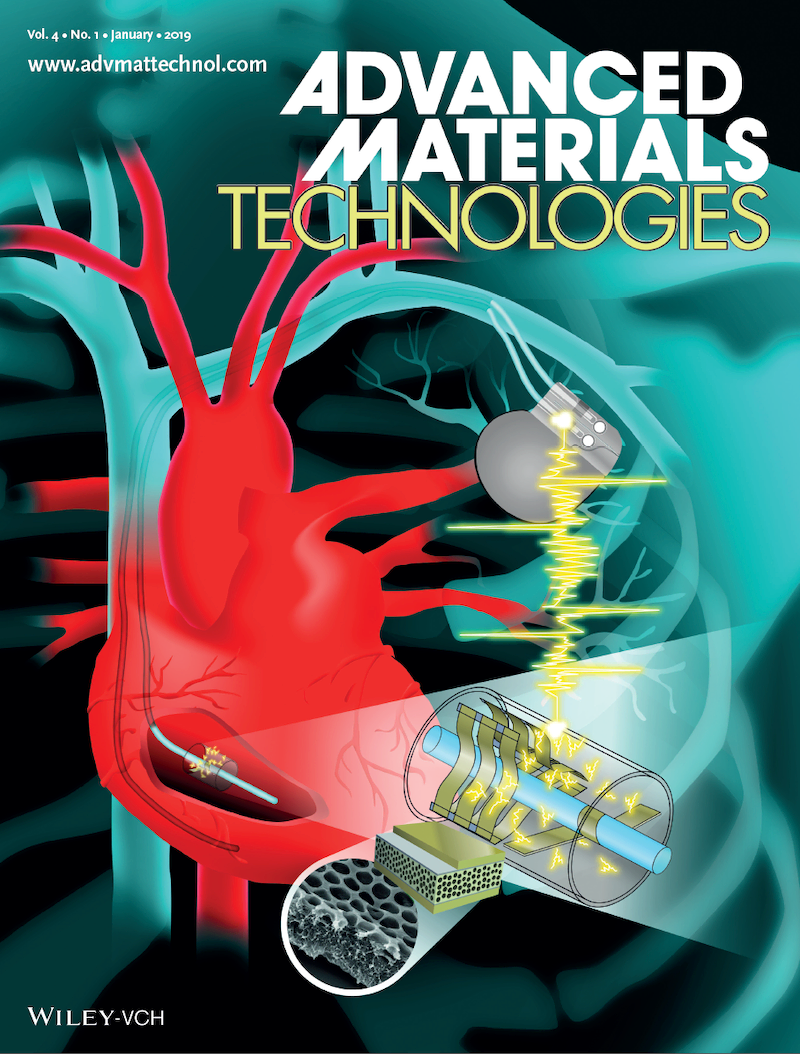- Undergraduate
Bachelor's Degrees
Bachelor of ArtsBachelor of EngineeringDual-Degree ProgramUndergraduate AdmissionsUndergraduate Experience
- Graduate
Graduate Experience
- Research
- Entrepreneurship
- Community
- About
-
Search
All Thayer News

Rendering of the two designs of the cardiac energy harvesting device. (Cover art by Patricio Sarzosa.)
Dartmouth Engineers Design Implantable Micro-Devices for Self-Charging Pacemakers
Jan 23, 2019 | by Catha Mayor Lamm
The over one million pacemakers implanted each year worldwide currently require an additional surgical procedure every 5–10 years to replace the batteries. Dartmouth engineering researchers, along with clinicians at UT Health San Antonio, have published promising results of a new way to power these and other implantable medical devices.

Rendering of the two designs of the cardiac energy harvesting device. (Cover art by Patricio Sarzosa.)
Funded by a 5-year NIH Director's Transformative Research Award and featured on the cover of this month’s Advanced Materials Technologies, the study investigates using a combination of thin-film energy conversion materials with a minimally-invasive mechanical design to enable self-charging batteries for a potentially wide-range of implantable devices including pacemakers and defibrillators.
“We’re trying to solve the ultimate problem for any implantable biomedical device,” says Dartmouth engineering professor John X.J. Zhang, a lead researcher on the study. “How do you create an effective energy source so the device will do its job during the entire life span of the patient, without the need for surgery to replace the battery?”
“Of equal importance is that the device not interfere with the body’s function,” adds Dartmouth research associate Lin Dong, first author on the paper. “We knew it had to be biocompatible, lightweight, flexible, and low profile, which also makes it not only fit into the current pacemaker structure but also scalable for future multi-functionality.” Other key collaborators on the study include Dartmouth engineering professor Zi Chen, an expert on thin structure mechanics, and Dr. Marc Feldman, professor and clinical cardiologist at UT Health San Antonio.
The work proposes a modification to existing pacemaker design that would harness the kinetic energy of the lead wire that’s attached to a beating heart and convert it into electricity to continually charge the batteries. The added material is a type of specialty polymer piezoelectric film called “PVDF” and, when designed with porous structures — either an array of small beams or a flexible cantilever — it can convert mechanical motion to electricity. The same modules could also be used as sensors which enable data collection for real-time monitoring of patients.
Here, Lin Dong demonstrates an oversized model of both the beam and cantilever designs:
The two remaining years of NIH funding plus time to finish the pre-clinical process and obtain regulatory approval puts a self-charging pacemaker approximately five years out from being on the market. “We’ve completed the first round of animal studies with great results which will be published soon,” says Zhang. “There is already a lot of expressed interest from the major medical technology companies, and Andrew Closson, one of the study’s authors working with Lin Dong and an engineering PhD Innovation Program student at Dartmouth, is learning the business and technology transfer skills to be a cohort in moving forward with the entrepreneurial phase of this effort.”
The NIH Director's Transformative Research Award is part of the High-Risk, High-Reward Research program supporting “individuals or teams proposing transformative projects that are inherently risky and untested but have the potential to create or overturn fundamental paradigms and may require very large budgets.”
For contacts and other media information visit our Media Resources page.
